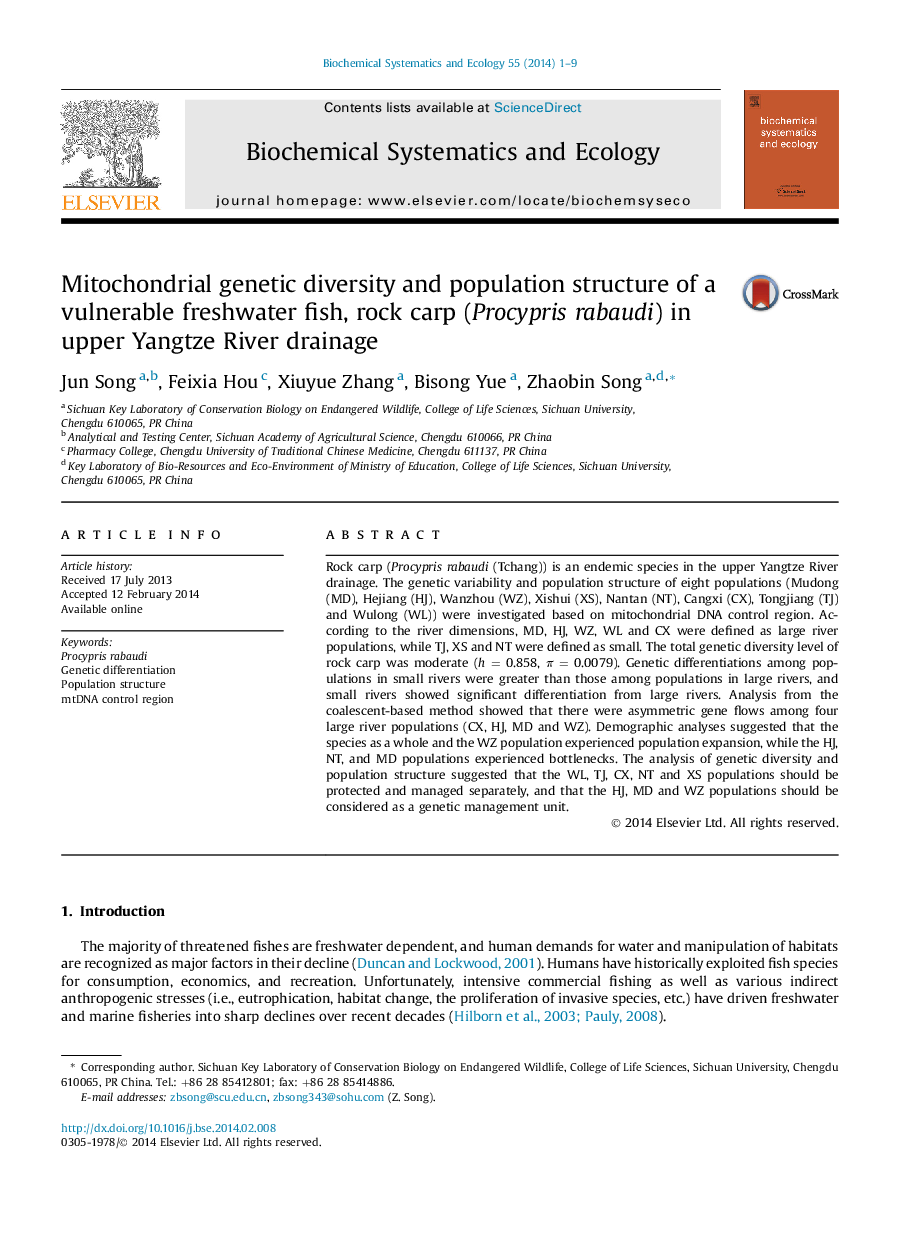| Article ID | Journal | Published Year | Pages | File Type |
|---|---|---|---|---|
| 7768626 | Biochemical Systematics and Ecology | 2014 | 9 Pages |
Abstract
Rock carp (Procypris rabaudi (Tchang)) is an endemic species in the upper Yangtze River drainage. The genetic variability and population structure of eight populations (Mudong (MD), Hejiang (HJ), Wanzhou (WZ), Xishui (XS), Nantan (NT), Cangxi (CX), Tongjiang (TJ) and Wulong (WL)) were investigated based on mitochondrial DNA control region. According to the river dimensions, MD, HJ, WZ, WL and CX were defined as large river populations, while TJ, XS and NT were defined as small. The total genetic diversity level of rock carp was moderate (h = 0.858, Ï = 0.0079). Genetic differentiations among populations in small rivers were greater than those among populations in large rivers, and small rivers showed significant differentiation from large rivers. Analysis from the coalescent-based method showed that there were asymmetric gene flows among four large river populations (CX, HJ, MD and WZ). Demographic analyses suggested that the species as a whole and the WZ population experienced population expansion, while the HJ, NT, and MD populations experienced bottlenecks. The analysis of genetic diversity and population structure suggested that the WL, TJ, CX, NT and XS populations should be protected and managed separately, and that the HJ, MD and WZ populations should be considered as a genetic management unit.
Related Topics
Physical Sciences and Engineering
Chemistry
Organic Chemistry
Authors
Jun Song, Feixia Hou, Xiuyue Zhang, Bisong Yue, Zhaobin Song,
